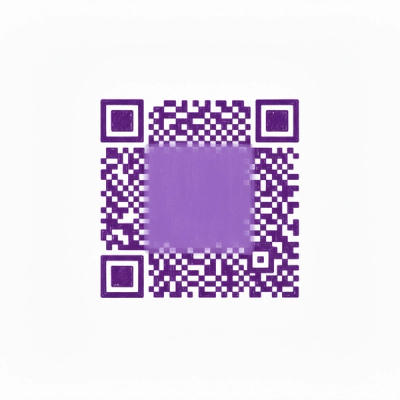
Research
Two Malicious Rust Crates Impersonate Popular Logger to Steal Wallet Keys
Socket uncovers malicious Rust crates impersonating fast_log to steal Solana and Ethereum wallet keys from source code.
@onirix/camera-controls-module
Advanced tools
This library is an addon to Onirix Embed SDK that allows manipulating the camera in a more intuitive and direct way to perform effects such as:
Full documentation available at Onirix Docs.
npm install @onirix/embed-sdk
npm install @onirix/camera-controls-module
Or include the dependency with the HTML head tag:
<head>
<script src="https://cdn.jsdelivr.net/npm/@onirix/embed-sdk@1.17.1/+esm"></script>
<script src="https://cdn.jsdelivr.net/npm/@onirix/camera-controls-module@1.2.1/+esm"></script>
</head>
Or as ESM modules:
import OnirixEmbedSDK from 'https://cdn.jsdelivr.net/npm/@onirix/embed-sdk@1.17.1/+esm';
import OnirixCameraModule from 'https://cdn.jsdelivr.net/npm/@onirix/camera-controls-module@1.2.1/+esm';
Before accessing any of its functions, the camera module must be initialized by providing an instance of the Onirix Embed SDK as shown below:
import OnirixEmbedSDK from 'https://cdn.jsdelivr.net/npm/@onirix/embed-sdk@1.17.1/+esm';
import OnirixCameraModule from 'https://cdn.jsdelivr.net/npm/@onirix/camera-controls-module@1.2.1/+esm';
const embedSDK = new OnirixEmbedSDK();
embedSDK.connect();
const camera = new OnirixCameraModule(embedSDK);
Onirix Studio experiences can be loaded in two modes: AR and PREVIEW. By default Onirix Camera Controls works in PREVIEW mode. If the experience is loaded in AR mode, the camera controls will be ignored. The modes in which Onirix Camera Controls is enabled can be configured through the second parameter of the constructor:
// Default: Only on PREVIEW mode
const camera = new OnirixCameraModule(embedSDK);
// Only on AR mode
const camera = new OnirixCameraModule(embedSDK, ['AR']);
// Both modes: AR and PREVIEW
const camera = new OnirixCameraModule(embedSDK, ['AR', 'PREVIEW']);
The camera can be moved using the camera.animate(...) function. This function receives the following parameters:
position_x, position_y, and position_z: The coordinates the camera should move to. If any of them is
undefined, the camera will stay in place.look_at_x, look_at_y, and look_at_z: The coordinates the camera should look at. If any of them is undefined,
the camera will keep looking at the point it is currently looking at.mode: How to animate the transition to these positions. It is specified by a string with two components: an
interpolator (a component that describes the path the camera should take) and an easing function (a component that
describes the speed of the camera along said path). This string must be formated as '<interpolator> <ease function>'.
Alternatively, any of the components can be omitted. If the mode is optional (can be undefined).There are two interpolators available:
linear: The camera moves in a straight line.spherical: The camera moves following and arc around a center.There are seven easing functions available:
linear-in-out: The camera moves always at the same speed.ease-in: The camera starts slower.ease-out: The camera reduces its speed as it reaches its destination.ease-in-out: The camera starts accelerates at the begining and decelerates as it reaches the end.bounce-in: The camera anticipates the movement by going in the opposite direction for a short period of time.bounce-out: The camera overshoots the destination for a short period of time.bounce-in-out: The camera anticipates the movement by going in the opposite direction and overshoots the
destination for a short period of time.Some examples of valid modes are 'linear', 'ease-in-out', 'spherical bounce-out'.
time: Length of the animation in seconds. If not provided it is assumed to be 0 .center_x, center_y, and center_z: When using a spherical interpolator, the center of the arc. Otherwise it is
ignored.The camera controls are the components that describe how user interactions (touches, mouse clicks, key presses...) are translated to camera movements around the scene. Camera controls are optional and you may use none if the camera cannot be controlled by the user.
Currently, the camera module supports the following camera controls:
camera.enableOrbitControls().The function camera.disableControls() can be used to disable the current camera controls.
Some functions allow setting limits to the transformations that the user can perform:
camera.setOrbitControlsPanRange(min_x, max_x, min_y, max_y, min_z, max_z) allows setting a minimum and maximum pan
value for each of the coordinate axes.camera.setOrbitControlsRotateRange(min_x, max_x, min_y, max_y, min_z, max_z) allows setting a minimum and maximum
rotation value for each of the coordiante axes. This rotation is measured as the angle from the camera to the axis.camera.setOrbitControlsZoomRange(min, max) allows setting a minimum and maximum zoom value.Also, there is a function that allows setting the orbit target: camera.setOrbitControlsTarget(x, y, z).
import OnirixEmbedSDK from 'https://cdn.jsdelivr.net/npm/@onirix/embed-sdk@1.17.1/+esm';
import OnirixCameraModule from 'https://cdn.jsdelivr.net/npm/@onirix/camera-controls-module@1.2.1/+esm';
const embedSDK = new OnirixEmbedSDK();
embedSDK.connect();
const camera = new OnirixCameraModule(embedSDK);
camera.enableOrbitControls();
embedSDK.subscribe(OnirixEmbedSDK.Events.SCENE_LOAD_END, () => {
camera.animateTo(
-1, 0, 1,
1, 0, -1,
'spherical ease-in-out',
5
);
});
import OnirixEmbedSDK from 'https://cdn.jsdelivr.net/npm/@onirix/embed-sdk@1.17.1/+esm';
import OnirixCameraModule from 'https://cdn.jsdelivr.net/npm/@onirix/camera-controls-module@1.2.1/+esm';
const embedSDK = new OnirixEmbedSDK();
embedSDK.connect();
const camera = new OnirixCameraModule(embedSDK);
camera.enableOrbitControls();
embedSDK.subscribe(OnirixEmbedSDK.Events.SCENE_LOAD_END, async () => {
await camera.animateTo(
0, 0.5, -5,
0, 0.5, 0
);
await camera.animateTo(
0, 0.5, 5,
0, 0.5, 0,
'spherical ease-in-out',
2,
0, 0.5, 0
);
await camera.animateTo(
0, 0.5, 2,
0, 0.5, 0,
'linear ease-in-out',
2,
0, 0.5, 0
);
});
👤 Onirix
FAQs
Onirix helper library for camera controls.
The npm package @onirix/camera-controls-module receives a total of 17 weekly downloads. As such, @onirix/camera-controls-module popularity was classified as not popular.
We found that @onirix/camera-controls-module demonstrated a healthy version release cadence and project activity because the last version was released less than a year ago. It has 3 open source maintainers collaborating on the project.
Did you know?

Socket for GitHub automatically highlights issues in each pull request and monitors the health of all your open source dependencies. Discover the contents of your packages and block harmful activity before you install or update your dependencies.

Research
Socket uncovers malicious Rust crates impersonating fast_log to steal Solana and Ethereum wallet keys from source code.

Research
A malicious package uses a QR code as steganography in an innovative technique.

Research
/Security News
Socket identified 80 fake candidates targeting engineering roles, including suspected North Korean operators, exposing the new reality of hiring as a security function.